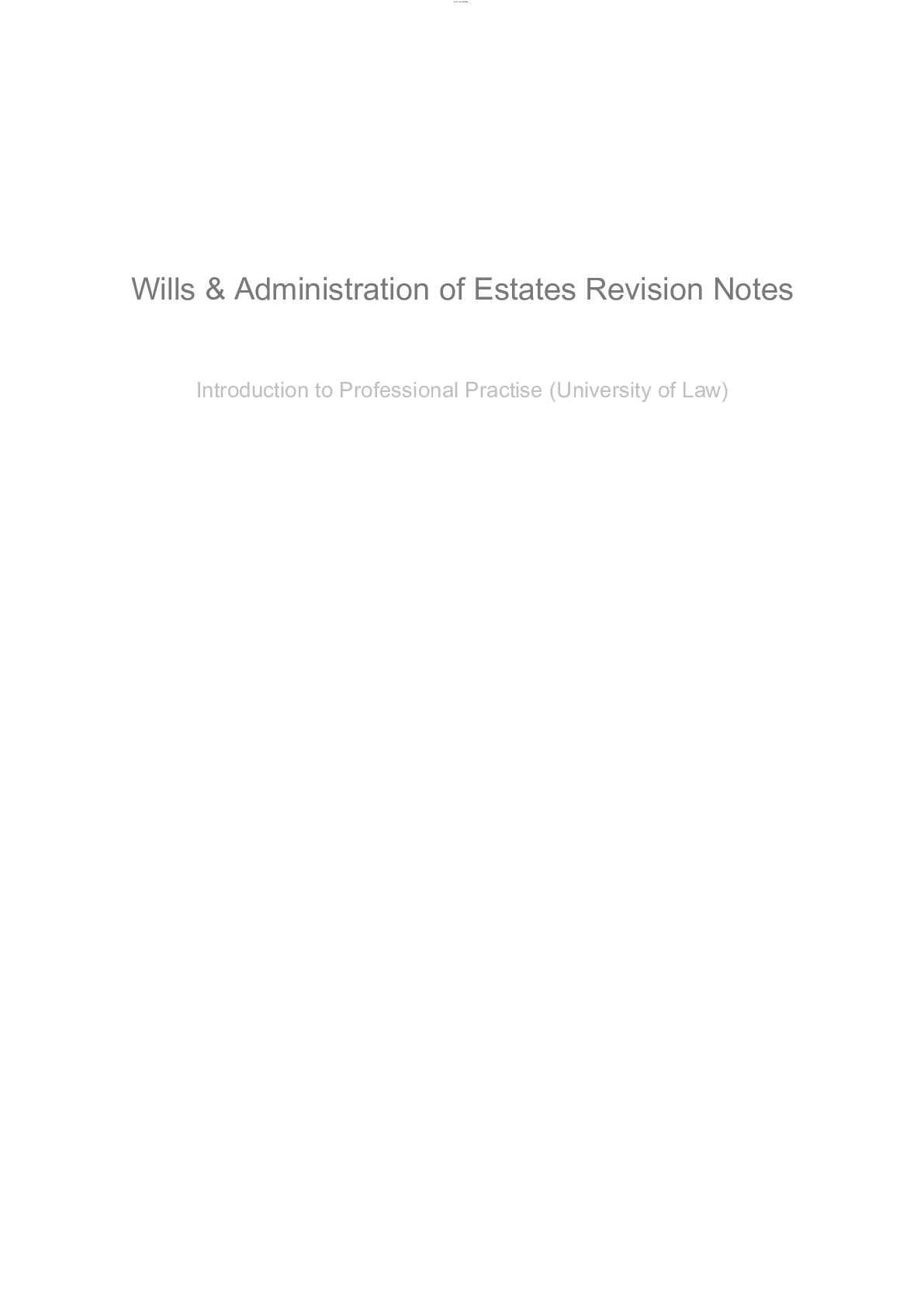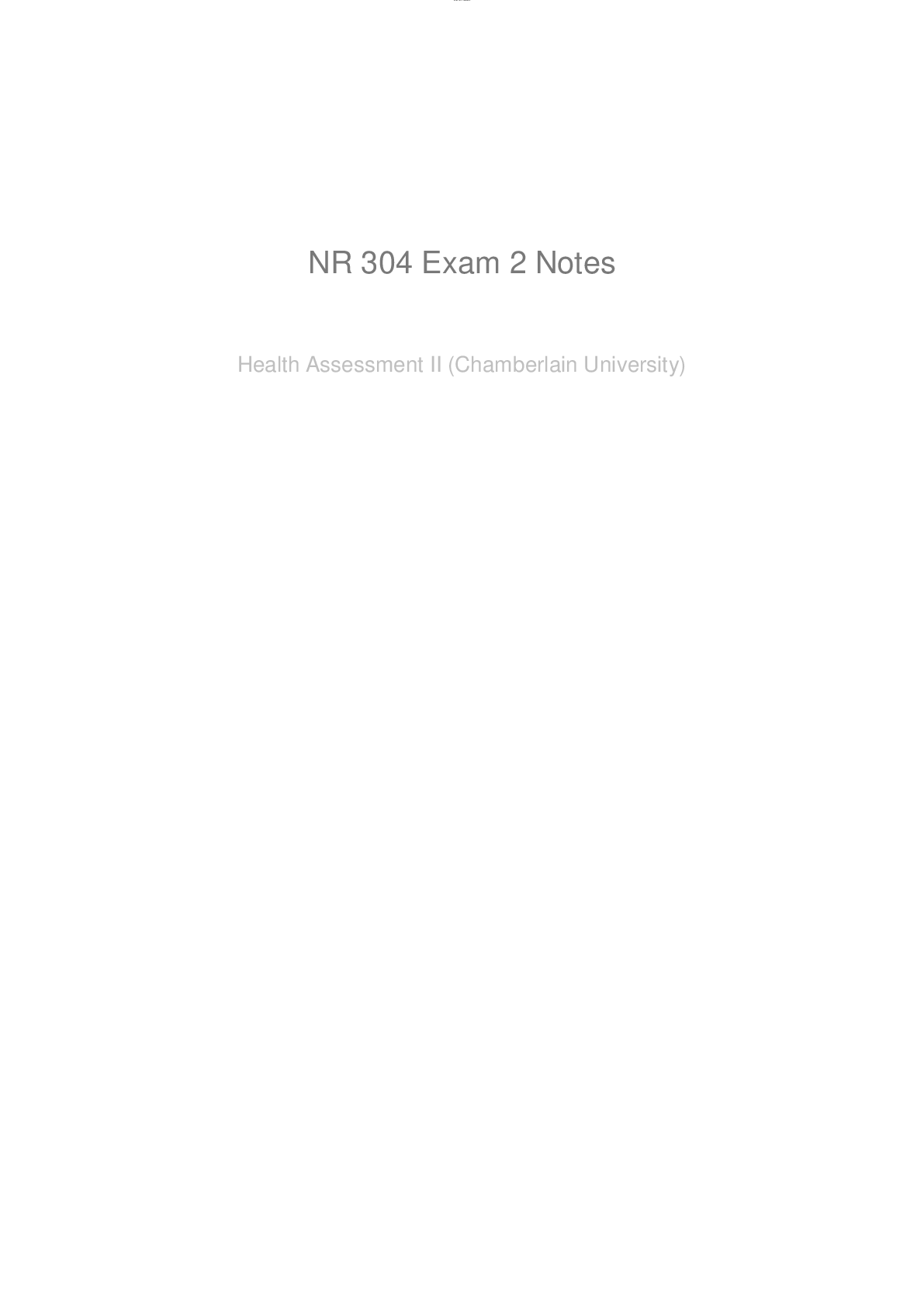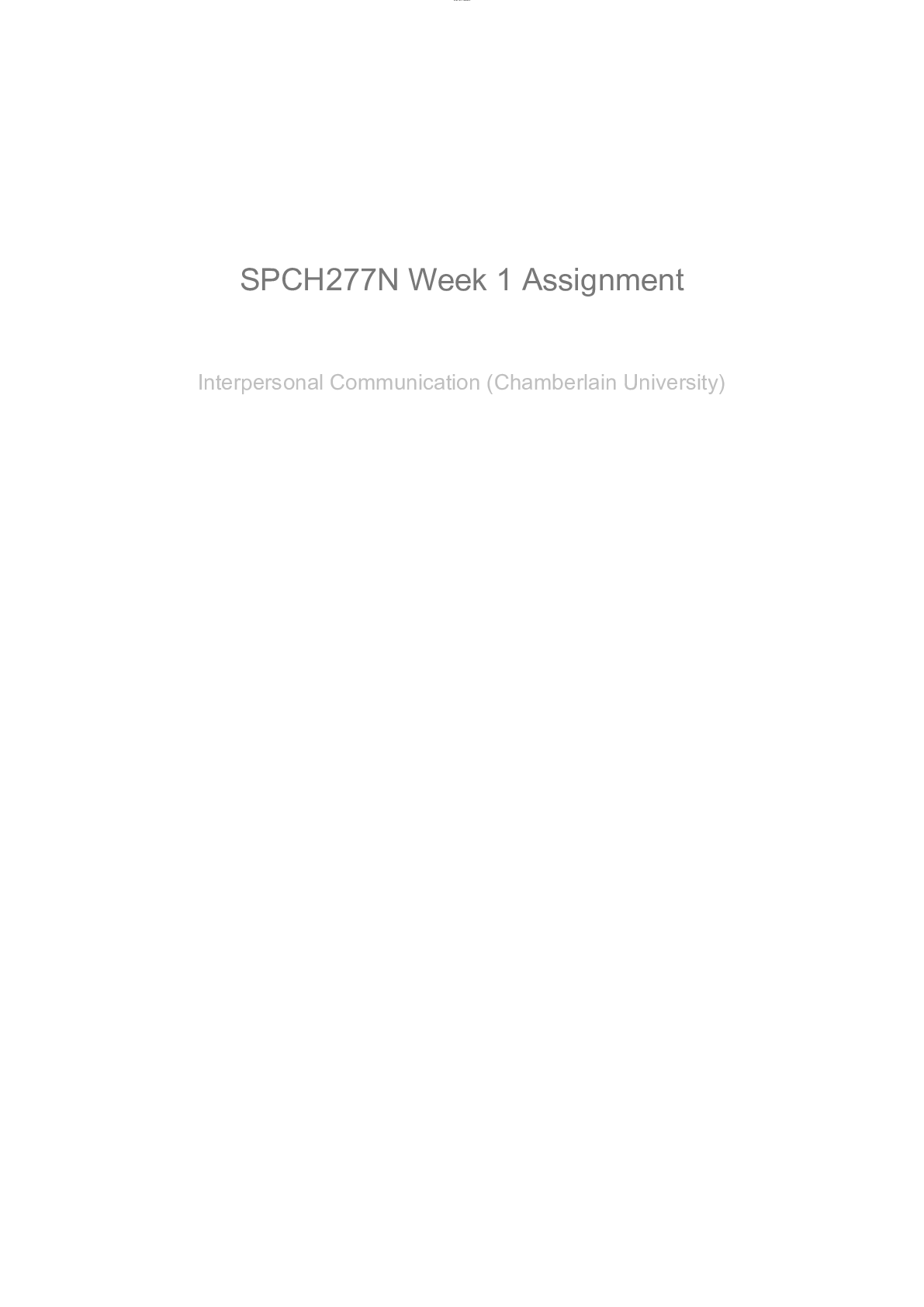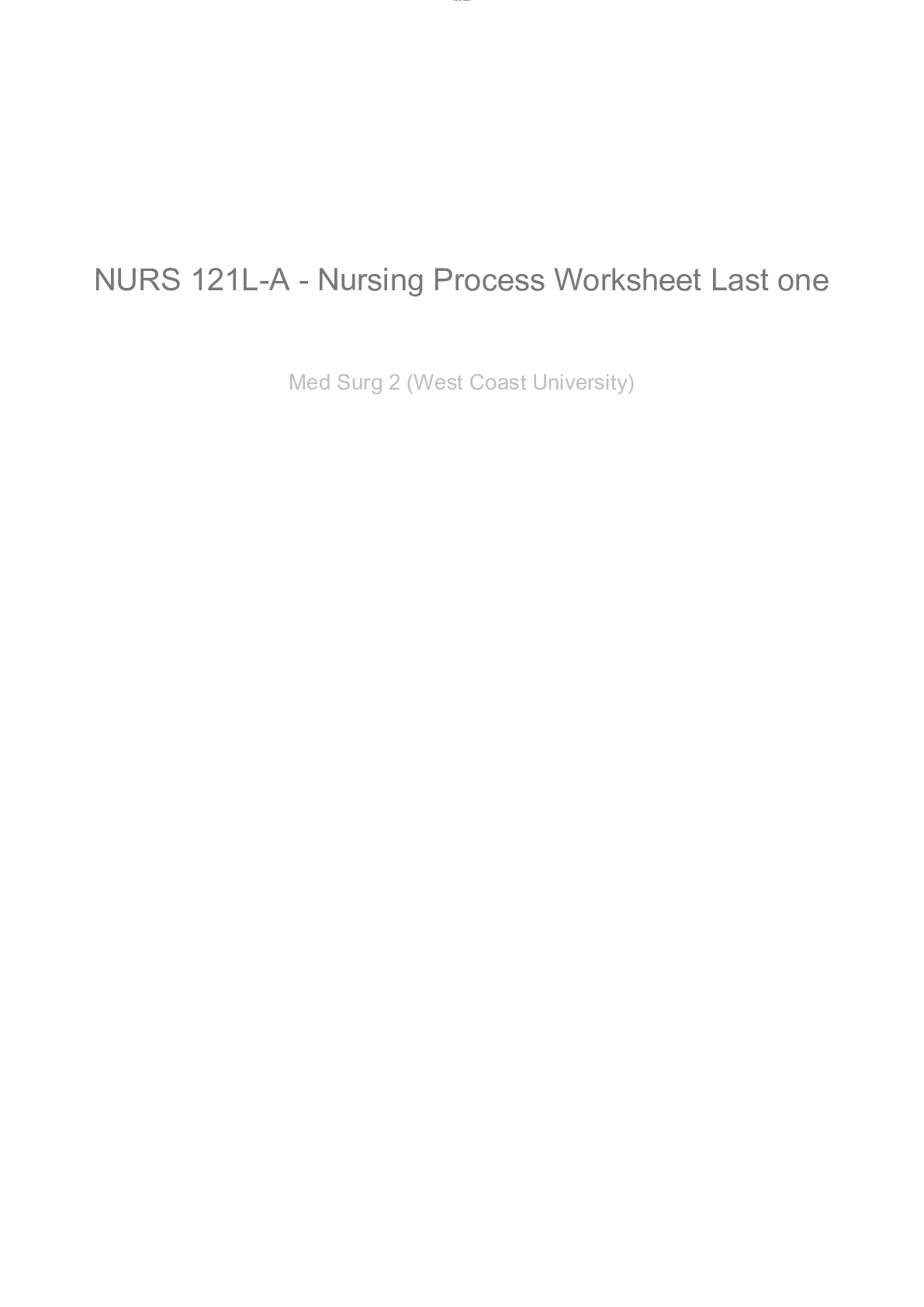*NURSING > Study Notes > NR 511 Week 1-3 Lectures.docx (All)
NR 511 Week 1-3 Lectures.docx
Document Content and Description Below
NR 511 Week 1-3 Lectures.docx WEEK 1 LECTURES Primary care is different than tertiary care. The types of problems that are solved in primary care are different than those seen in acute- or critica... l-care settings, which you may be used to as a bedside nurse. Upper respiratory infections, abdominal complaints, skin rashes, and vague somatic complaints are problems that are not often encountered in the hospital setting. Even chronic conditions present differently in primary care. HTN, CHF, arthritis, and DM present with day-to-day management problems that are different from the crises that acute-care nurses must respond to in a tertiary-care setting. As you will soon find, primary care is a new world with a different set of problems to be solved, different kinds of constraints on choices, and a different culture of care. Diagnosing and treating up to 30 different patients or families in a day is both challenging and mentally exhausting. Although an office visits allows for focused one-on-one care with an individual patient, the NP must still recognize that healthcare is a business. In order to meet office overhead costs, including provider and staff salaries, the business must be profitable or at least have equal income to operational cost margins. Because of this, a nurse practitioner needs to have a solid understanding of how to obtain and process information in an organized approach. Learning to practice primary care in an artful way requires a certain kind of thinking. The mental task of eliciting and sorting through large amounts of data, clustering data elements into meaningful patterns, connecting patterns to reasonable diagnostic statements, considering risk factors, and selecting appropriate interventions require a high level of diagnostic reasoning. Diagnostic reasoning can be seen as a kind of critical thinking. Critical thinking involves the process of questioning one’s thinking to determine if all possible avenues have been explored and if the conclusions that are being drawn are based on evidence. Diagnostic reasoning then includes a systematic way of thinking that evaluates each new piece of data as it either supports some diagnostic hypothesis or reduces the likelihood of others. Developing expertise as a nurse practitioner takes time. Students who are experts in hospital or specialty care become novices in the advanced practice role. Clinical judgment and diagnostic reasoning is based on experience. As a student, you will hopefully gain skills to function at the advanced beginner level through didactic work and the added clinical practicum experience. It took years for you to become an expert nurse, so you can expect that it will take years to become an expert NP. On your journey towards graduation from the FNP program, you will be given the necessary tools to help you be successful on the board certification exam and become a competent advanced beginner. The type of data that you collect depends on the type of visit. Most visits are episodic or problem-focused where 1 or 2 specific issues need to be addressed. One thing I want to point out is that the information in the H&P should only be relevant to the complaint or problems that you are addressing. So, a patient with only a skin complaint does not need a full H&P. Rather, a focused history and exam as it relates to the skin complaint or associated symptoms should be recorded. First, I want to go over two important, distinct concepts that seem to be an area of confusion for many students: subjective and objective findings. We will discuss these in more detail when we introduce the SOAP note lecture. To start, subjective information is what the patient: 1) reports, 2) complains of; or 3) tells you in response to your questions. Examples of subjective information include the following: Constitutional: fever, chills, lethargy, weight loss or gain, and so on HEENT: headache, blurred vision, otalgia, sore throat, and so on Neck: swollen lymph nodes, and so on Lungs: SOB, cough, wheezing, and so on These are all examples of subjective information. Subjective information is the S part of the SOAP note, which includes CC, HPI, and ROS, as these are all things that the patient reports to you in an interview. Objective information is what you can see, hear, or feel as part of your clinical exam. It also includes laboratory data and test results. Examples of objective information include the following: Constitutional: well-developed, well-groomed, thin, cachectic, obese, and so on HEENT: Normocephalic, PERRL Neck: anterior cervical lymph nodes are swollen and tender Lungs: clear, wheezing in RLL, bronchospastic cough Results: you might list the CBC, strep test, U/A, CXR, CT, and so on Objective information is the “O” part of the SOAP. Eliciting a detailed patient history through open-ended questioning and active listening offers critical clues to determining a diagnosis. Obtaining a meaningful history involves collecting subjective information and organizing it into meaningful chunks of knowledge. Data acquisition in history taking is most effective if it is hypothesis driven. In other words, when the information selected and gathered is related to the list of possible diagnoses. Hypothesis-driven data means that data that would confirm or disprove a specific hypothesis are specifically sought and recorded. However, obtaining data that fit one possible problem is not enough. Competing hypotheses must be ruled out by seeking additional data, and the provider needs to consider that the priority list of hypotheses may change based on new information. For example, symptoms of runny nose may be due to a viral infection. If in the history- taking the provider specifically asks if these symptoms have occurred before and the patient replies, “Yes, this also happened 2 weeks ago,” the likelihood of a viral infection decreases and the likelihood of an allergy increases. In other words, your hypothesis for the etiology of rhinitis has now changed. The chief complaint (CC) is a one-to-few word statement identified by the patient as the reason for their visit to you today. Try to identify the chief complaint in this scenario: Johnny, a 5-year-old, is brought to your office by his mother. The mother reports that the school nurse called because Johnny said he had a tummy ache. Several other students in the school also have complained of some GI symptoms. He did not throw up, but he says he feels like he could. In this case, an acceptable CC would be nausea or “tummy ache.” It’s short and to the point. You will expand on information about the chief complaint in the history of present illness (HPI). The HPI is a detailed breakdown of the CC, written out as the OLDCARTS acronym. Each letter in the acronym represents important information about the CC, which will help you to develop a differential diagnosis. The HPI is focused on the CC only, so each letter of the acronym should address that one issue. Any additional information that you feel is pertinent to report in the case but is not directly related to the CC should be reported in the ROS. HPI O: Onset of CC L: Location of CC D: Duration of CC C: Characteristics of CC A: Aggravating factors for CC R: Relieving factors for CC T: Treatments tried for CC S: Severity of CC There are two things I want to point out here. Do not get confused on duration. Duration is not referring to the onset of the symptom. Rather, it is an assessment of whether the symptom is constant or if it comes and goes. Also, don’t forget to ask about severity. Severity refers to the level of pain (such as reported on a pain scale) or how the symptom has impacted the patient’s ability to go to school, to go to work, or to perform their daily routine. This should be included in every HPI. Be sure to watch the video lecture on the ROS, which is again, assessment of subjective information. Because you have successfully completed NR509, it is expected that you are competent in performing a head-to-toe physical exam. Although some of your patients may present for a complete physical where you need to address all of the body systems, you must now learn to focus your assessment skills to be appropriate for the patient’s complaint and history as part of a problem-focused visit. This will become clearer as you go through the lecture on billing and coding. Differential diagnosis, or differential, is a list (single) of plausible diagnoses (plural) that fit the historical and clinical presentation of your patient in order of priority. This is different than the problem list, which is a list that includes all of the active medical problems for the patient. You will be seeing these in your clinical rotations, but for the purposes of your first clinical course, we will not be putting together problem lists. The focus in this course is on how to formulate a differential diagnosis. There is a separate video lecture on the differential diagnosis for you to view this week which presents the concept of formulating a differential diagnosis in a meaningful way. Diagnostic tests can be used to confirm or to rule out hypotheses. They may also be used to screen for conditions or monitor the progress in managing a chronic condition. Diagnostic tests vary in usefulness based on sensitivity, specificity, and predictive value. When we describe the specificity of a test, we are referring to the ability of the test to correctly detect a specific condition. If the patient has the condition but testing is negative, we describe this as a false negative. If the patient does not have the condition but the test result is positive, this is considered to be a false positive test. When a test is very sensitive, we mean it has few false negatives. The higher the sensitivity, the lesser the likelihood of a false negative. A sensitivity of 99% means that it is very unlikely for a false negative result. In a perfect world, a test would have 100% specificity and sensitivity, but we know that it is not the case. Therefore, it is important to consider the specificity and sensitivity of a test when considering its usefulness in ruling your hypothesis in or out. Predictive value is the likelihood that the patient actually has the condition and is, in part, dependent upon the prevalence of the condition in the population. If a condition is highly likely, a positive test result is more likely to be accurate. If a condition is very unlikely, a positive test needs to be questioned and perhaps additional testing would need to be done. When deciding whether or not to order a test, five things must be considered. Cost Convenience Sensitivity Specificity Risk of missing a condition (predictive value) [Show More]
Last updated: 1 year ago
Preview 1 out of 62 pages
Instant download
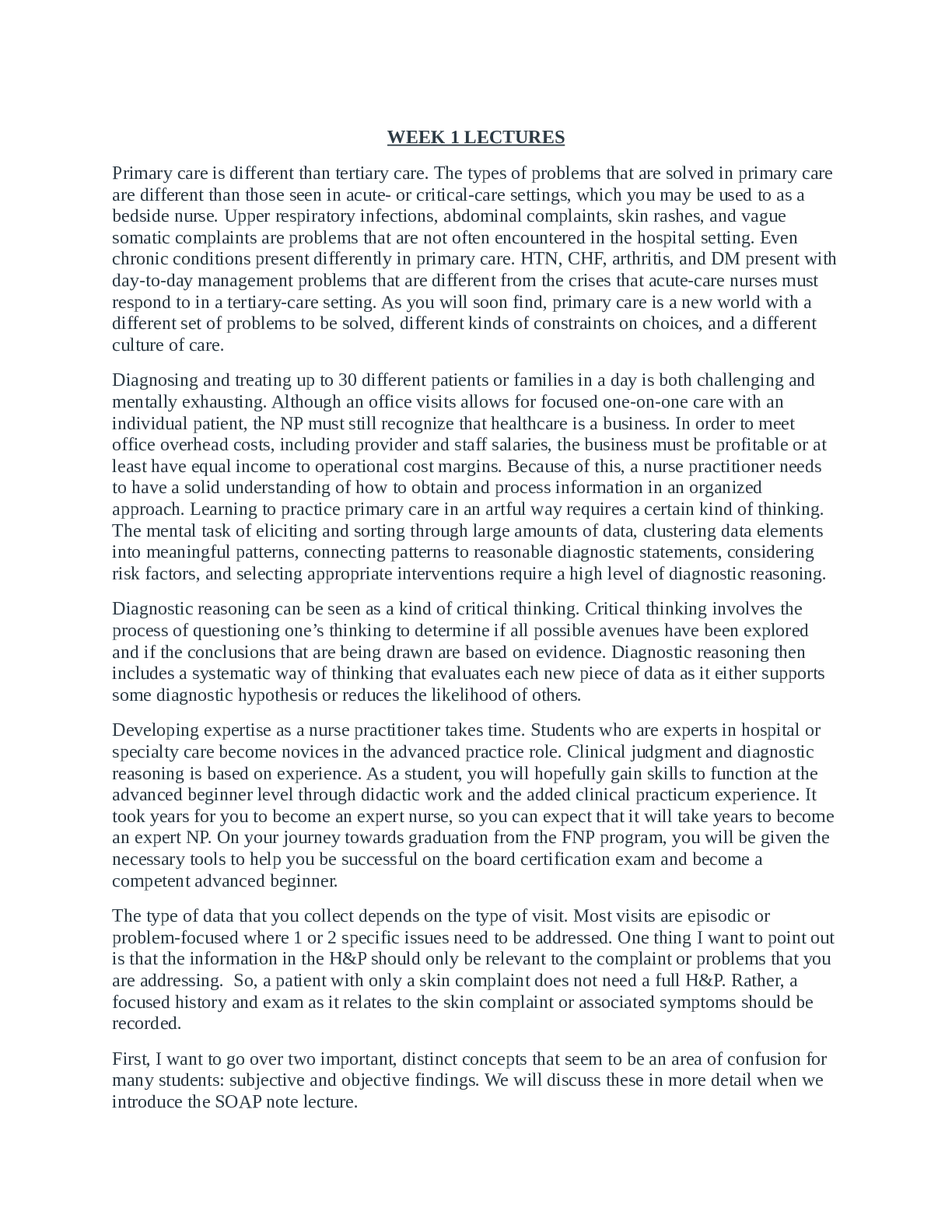
Instant download
Reviews( 0 )
Document information
Connected school, study & course
About the document
Uploaded On
Aug 31, 2021
Number of pages
62
Written in
Additional information
This document has been written for:
Uploaded
Aug 31, 2021
Downloads
0
Views
50

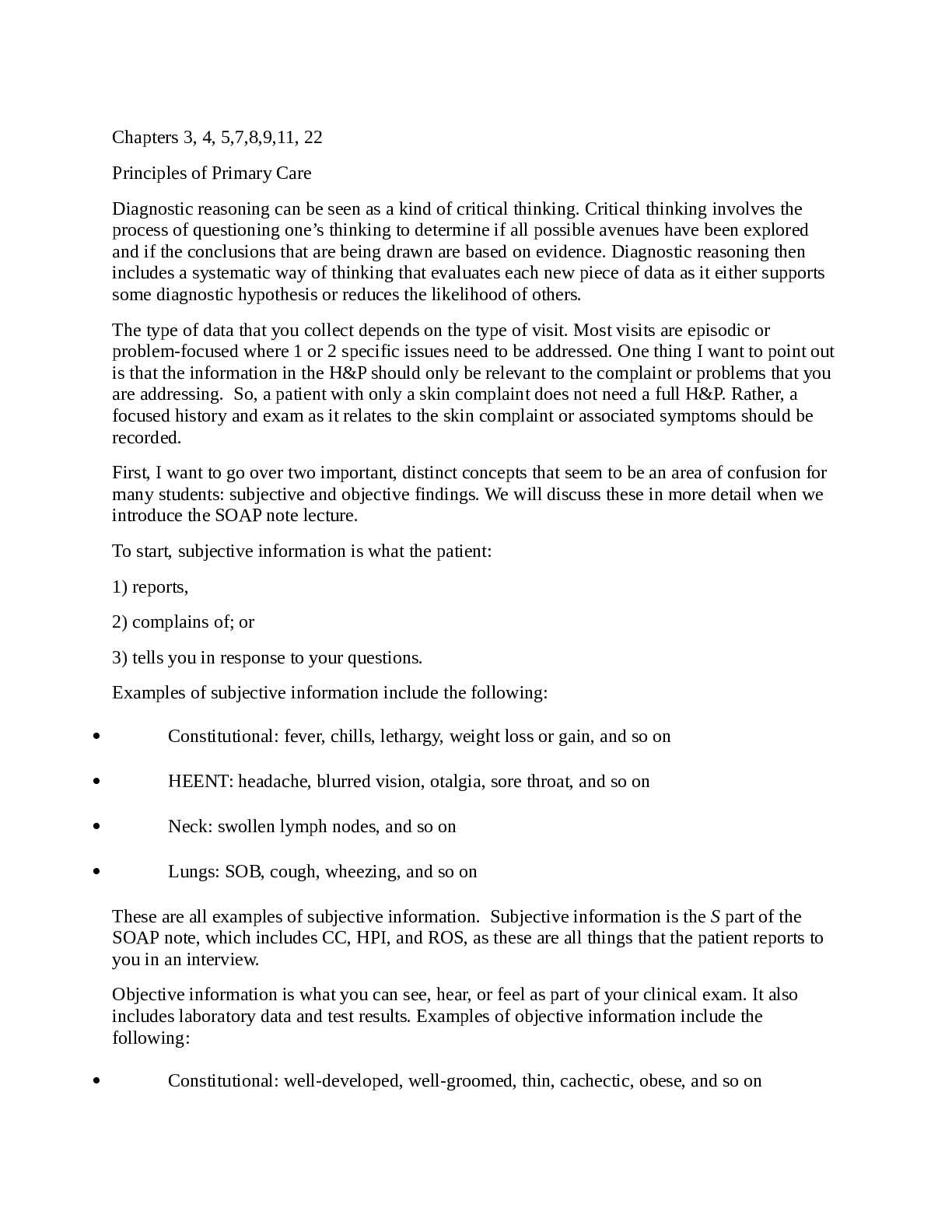
.png)
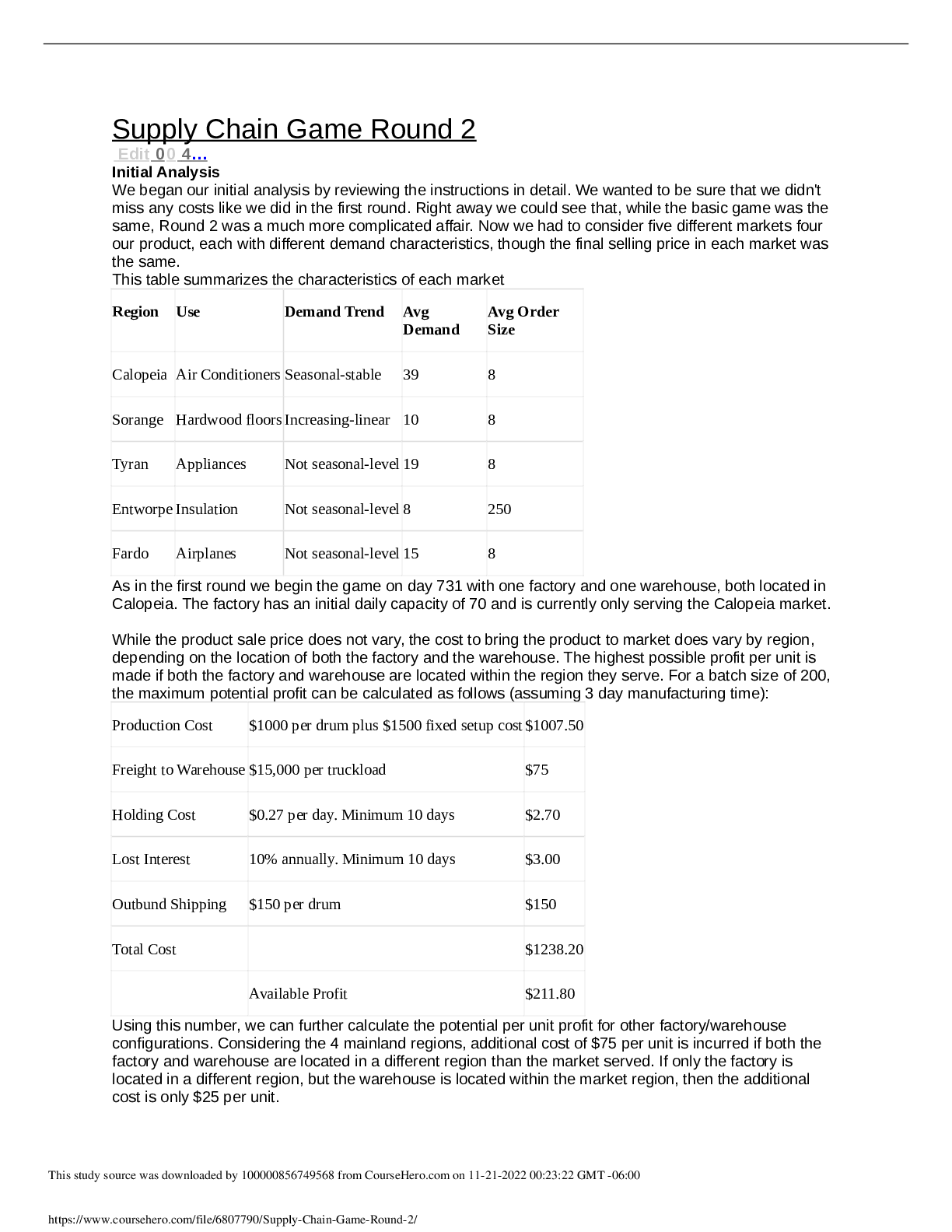


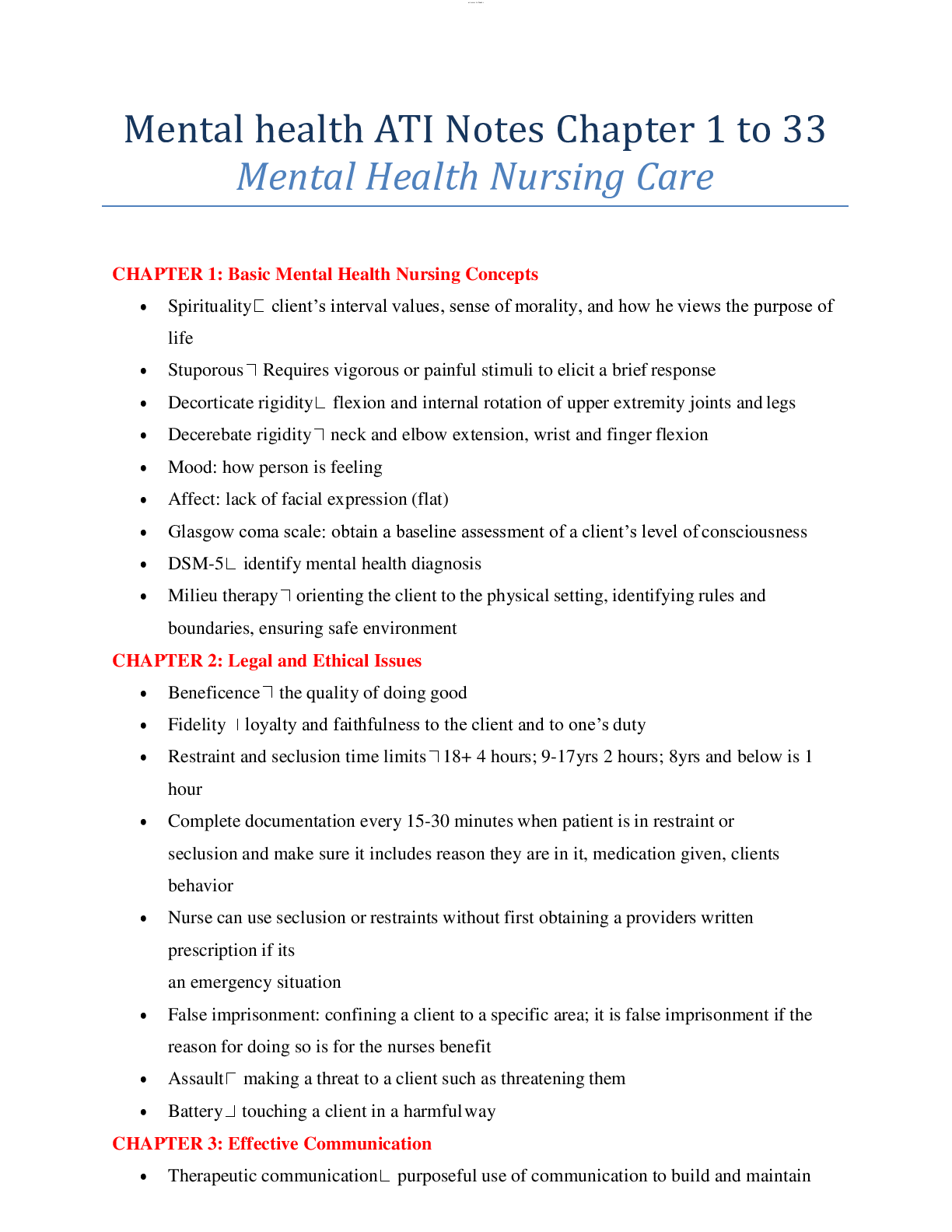
.png)


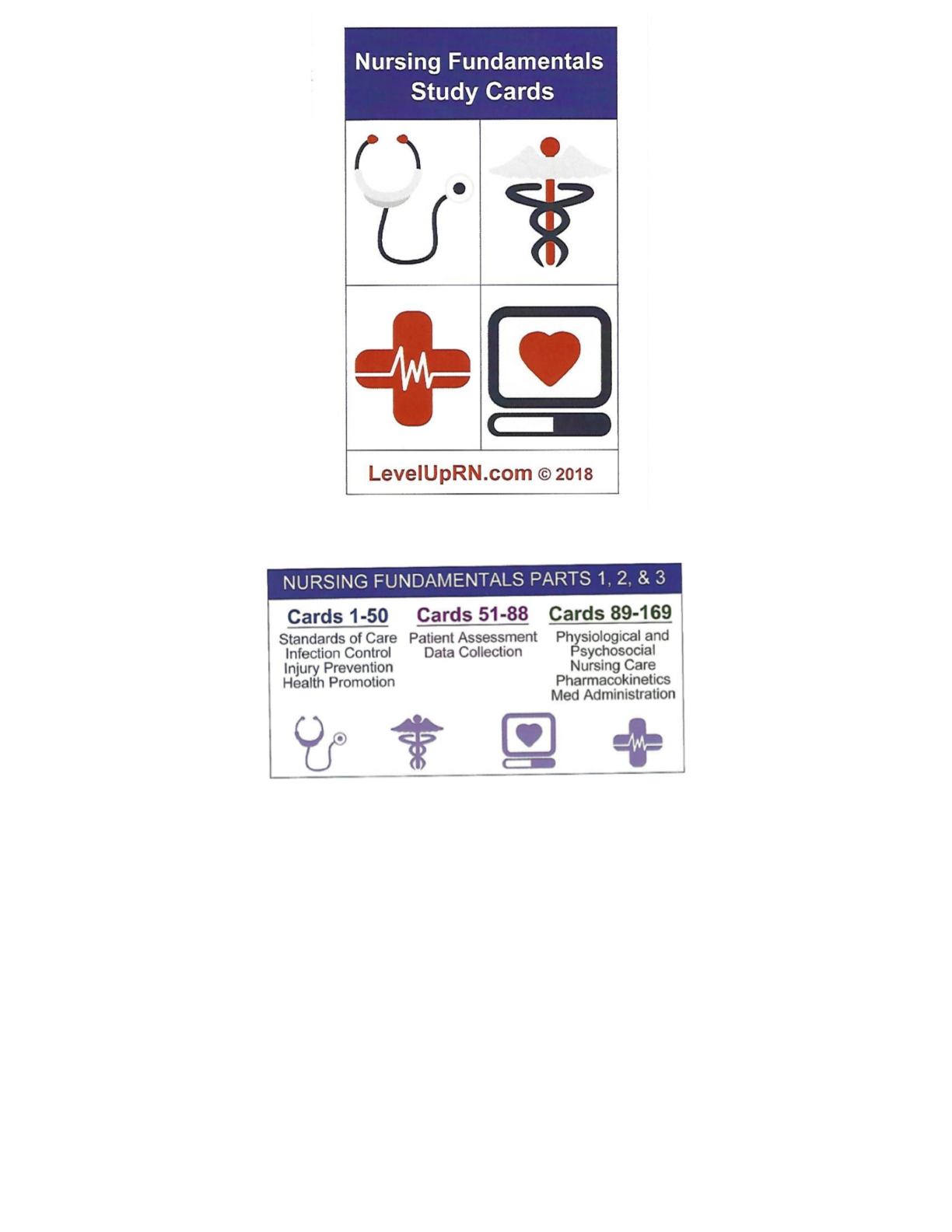

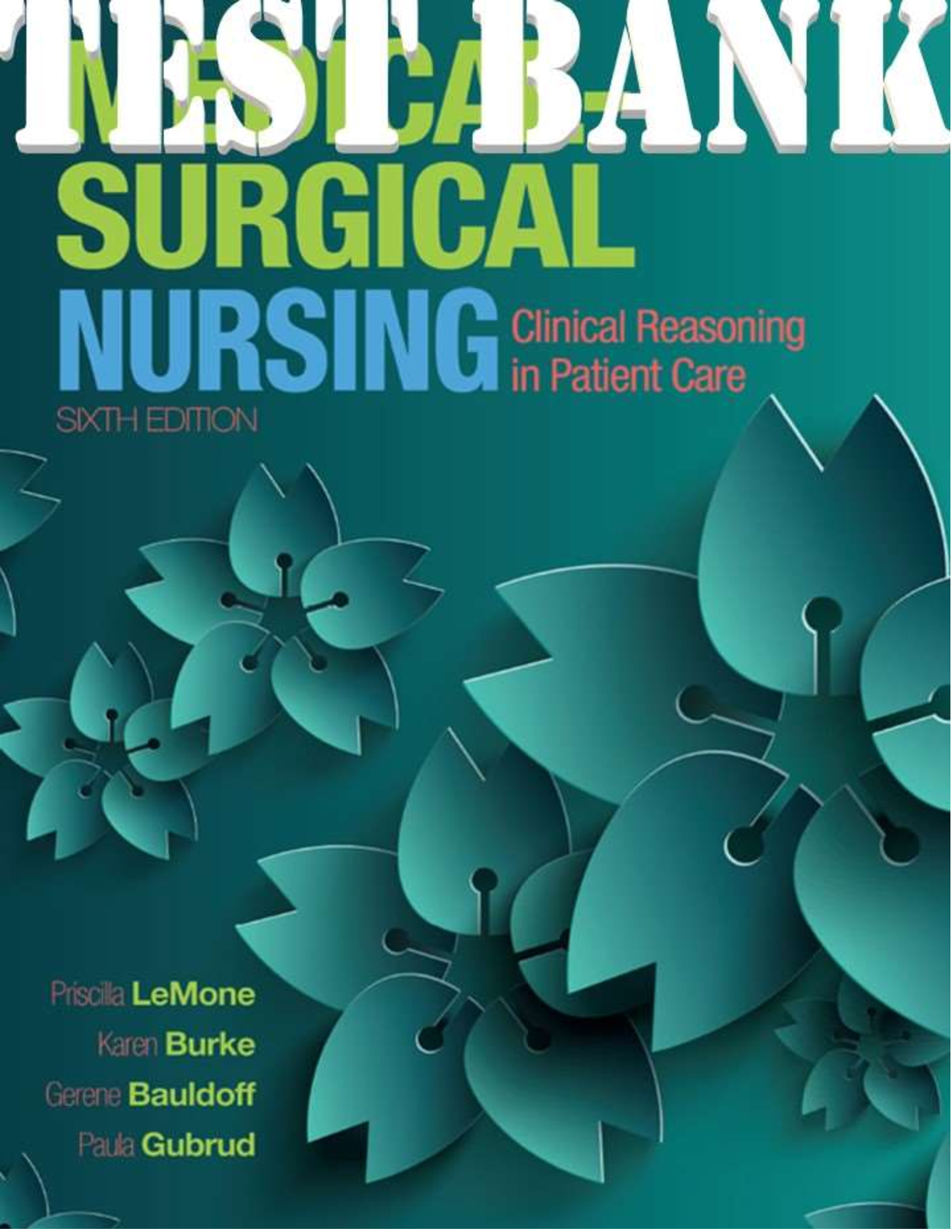
.png)

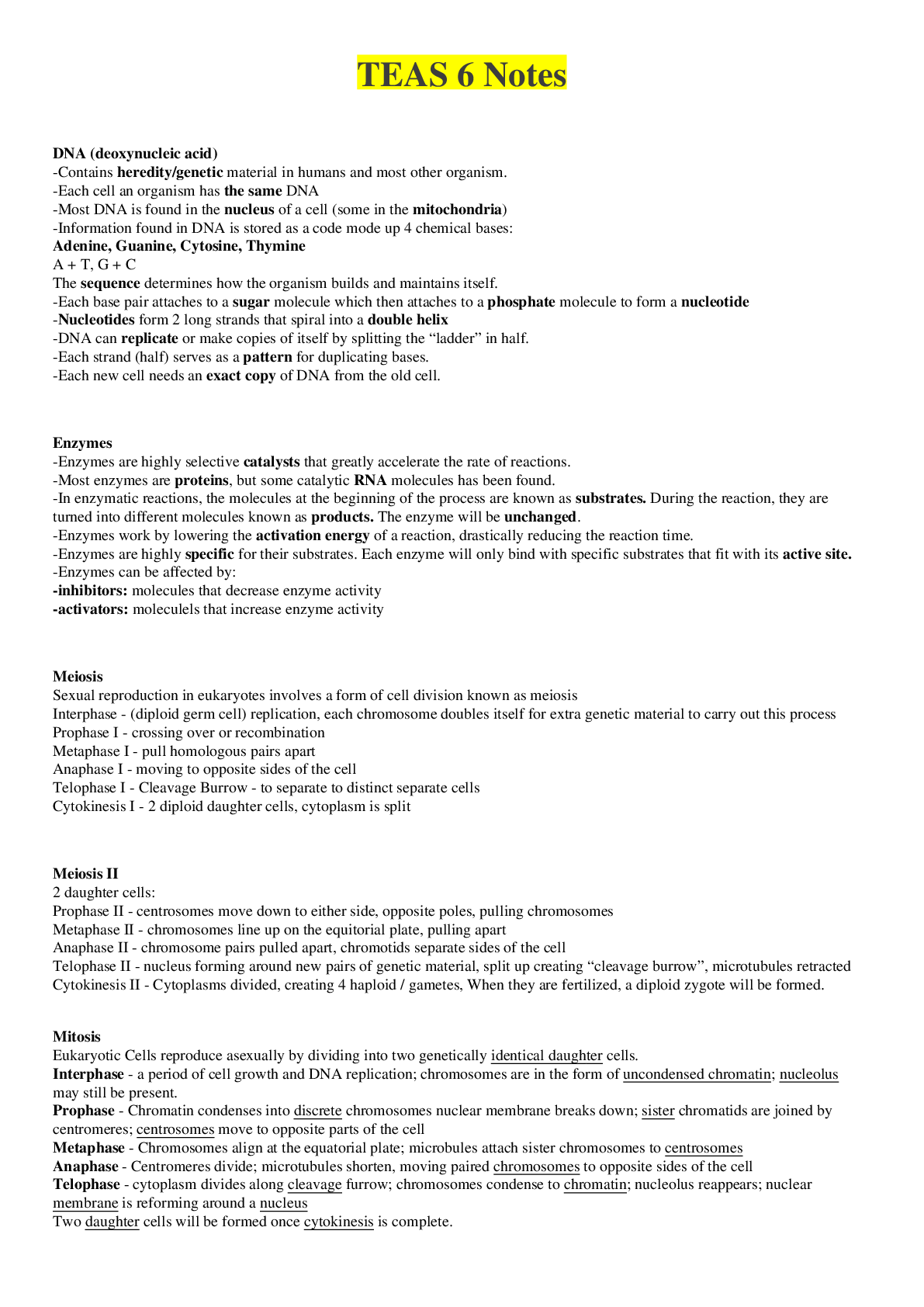

How Do Geographically Dispersed Teams Collaborate Effectively Paper.png)

